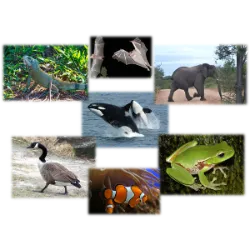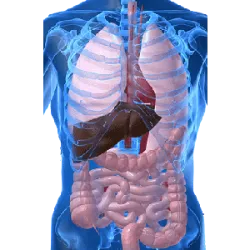Mineral Wealth and Management Challenges

Mineral Wealth and Management Challenges
Known for its reddish color and high concentration of minerals, it plays a significant role in tropical and subtropical regions, especially in areas of intense agricultural and mining activity. Formed over thousands of years by weathering processes in hot and humid climates.
Features
Composition: Rich in iron and aluminum oxides, which gives it its characteristic reddish color. In some cases, it may contain valuable minerals such as bauxite.
Texture: Predominantly clayey, but with the presence of hard aggregates when exposed to air.
Porosity: Has low water retention capacity due to compaction.
Color: Shades that vary from red, brown and yellow, depending on the proportion of metallic oxides.
Properties:
High Resistance to Erosion: When compacted, it forms a hard crust on the surface, making surface erosion difficult.
Limited Fertility: Despite the presence of minerals, it is poor in organic matter and essential nutrients, requiring correction for agricultural use.
Moderate Permeability: Natural compaction can make water infiltration difficult.
Durability: Hardened laterite form, used in construction and as a paving material.
Characteristics and Applications of a Versatile Soil

Characteristics and Applications of a Versatile Soil
Known for its fine texture and high fertility, it plays an important role in agriculture and infrastructure projects. Predominantly formed by silt particles, with a diameter between 0.002 mm and 0.05 mm.
Features
Composition: Rich in silt particles, smaller than sand, but larger than clay.
Texture: Soft and silky to the touch, with a powdery appearance when dry.
Water Retention: High capacity to store water, which can favor plant development, but also increases the risk of waterlogging.
Color: Generally varies from light to brown tones, depending on the mineral composition and organic matter content.
Porosity: It has medium pores that allow moderate air circulation, but with less efficiency than sandy soils.
Properties
High Fertility: High nutrient retention capacity.
Sensitivity to Erosion: Its light and thin structure is easily carried away by the action of water or wind.
Compaction Capacity: It is easily compacted, which can hinder root growth and the infiltration of excess water.
Moderate Drainage: Allows water to drain, but may accumulate moisture in rainy periods.
Test yourself with one of these challenges 👇
Discover some interesting facts about Types of Soils
A Valuable Resource for Agriculture and Sustainability

A Valuable Resource for Agriculture and Sustainability
Characterized by its composition rich in calcium carbonate (CaCO₃) and other minerals, it plays a crucial role in various human activities, especially in agriculture. This type of soil, common in regions with a dry or semi-arid climate.
Features
Mineral Composition: Predominance of limestone and magnesium, which results in an alkaline pH, making it less acidic than other types of soil.
Texture: Can vary between clayey and sandy, depending on the region, with good drainage in sandier soils.
Color: Generally light, varying between white, gray and brown tones, due to the presence of minerals.
Moisture Retention: Moderate, which may vary depending on the composition and density of the soil.
Properties and Benefits
Acidity Correction: Limestone soil is known to balance the acidity of neighboring areas when combined with other types of soil, improving growing conditions.
Source of Nutrients: Rich in calcium and magnesium, essential elements for healthy plant growth.
High Drainage: In sandier soils, water drains quickly, reducing the risk of waterlogging.
Stability: Resistant to erosion, especially in more compacted limestone soils.
Humiferous Soil

Fertility and Sustainability in the Spotlight
Humiferous soil, also known as terra preta or organic soil, is one of the most valued in agriculture and gardening due to its high fertility and contribution to environmental sustainability. Rich in organic matter, it is formed from the decomposition of plants and animals, making it an ideal choice for various applications.
Main Features
With a composition rich in humus – a substance formed by organic decomposition – humus soil contains essential nutrients such as nitrogen, phosphorus and potassium. Its light and soft texture, combined with high porosity, allows for balanced retention of water and air, favoring the development of plant roots. Its dark color, associated with the characteristic odor of damp earth, are indicators of high fertility and intense microbiological activity.
Properties that Guarantee Advantages
Natural Fertility: Rich in nutrients, promotes vigorous plant growth.
Moisture Retention: The porous structure keeps the soil moist for longer, ideal for crops.
Good Aeration: Facilitates oxygenation of the roots, essential for plant health.
Active Microorganisms: It houses a biodiversity of fungi and bacteria that enrich the soil.
Discover the Characteristics and Challenges of "Solo Leve"

Discover the Characteristics and Challenges of "Solo Leve"
Widely found in several regions of Brazil, it is known for its grainy texture and characteristics that impact its application in agriculture and construction. Composed mainly of sand (70%) and with a low clay content (15%), it is characterized by high porosity and permeability, which directly influences its water and nutrient retention capacity.
Properties and Uses
Due to its good drainage, it allows rapid water infiltration, making it ideal for crops that do not tolerate waterlogged soils. However, its reduced capacity to retain water and nutrients represents a challenge for agriculture, especially in crops that require nutritional stability. To overcome this limitation, organic fertilization and techniques such as crop rotation are recommended.
In civil construction it is used as a base for drainage and in the production of concrete and mortar. However, its porosity can cause cracks in structures close to groundwater.
Risks and Management Measures
Vulnerability to erosion, combined with low soil fertility and acidity, requires specific management care. The application of limestone to correct the pH and the use of organic matter are essential measures to make this soil more productive and sustainable.
Discover the Characteristics and Applications of a Versatile Resource

Discover the Characteristics and Applications of a Versatile Resource
Clay soil, one of the best known for its peculiar composition, has attracted attention due to its versatility and properties that directly impact its functions and uses. Composed of more than 45% of extremely small particles, smaller than 0.002 mm, it stands out both in the field and in civil construction.
Unique Features
The main characteristic of clayey soil is its soft and sticky texture when wet, which becomes hard and compact when it dries. The presence of micropores makes air and water circulation difficult, but guarantees high moisture retention. Its color varies between dark tones, in soils rich in organic matter, and reddish or yellowish, due to the presence of iron oxides.
Properties that Make a Difference
Water Retention: The low permeability of this soil allows for great water retention, useful for ecosystems and irrigation projects. However, it may cause waterlogging after heavy rain.
Fertility: Ideal for some crops, clay soil can be very fertile, but the mineral composition varies depending on its formation.
Compaction and Permeability: Its compact nature makes water infiltration difficult, favoring the formation of puddles and requiring specific care in handling.
Test yourself with one of these challenges 👇
HOME










